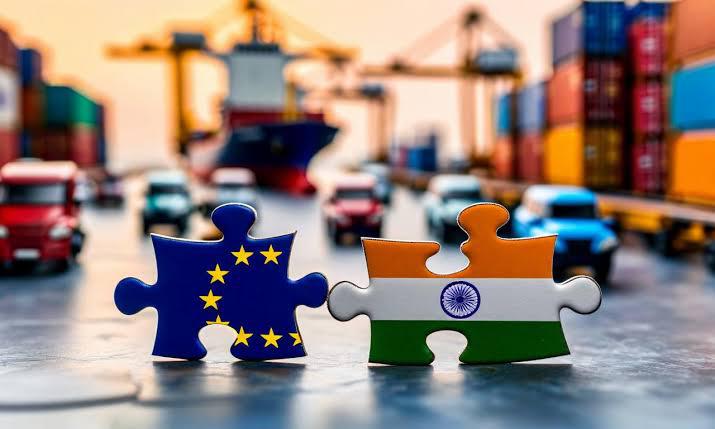The India-EU Free Trade Agreement negotiations have entered a decisive phase, with negotiators focusing on achieving breakthrough progress in seven specific sectors out of the total 23 under discussion. This strategic approach reflects the pragmatic recognition that comprehensive trade liberalization across all sectors simultaneously may be politically and economically unfeasible, but substantial economic gains can be realized through targeted agreements in key areas where mutual benefits are most evident and political obstacles are most manageable.

The momentum behind this focused approach has been building through sustained diplomatic engagement, with the European Union and India holding their second ministerial meeting of the Trade and Technology Council (TTC) on 28 February 2025, in New Delhi, demonstrating high-level political commitment to concluding agreements. India and the European Union have decided to conclude their much-awaited Free Trade Agreement (FTA) by the end of 2025, with the sectoral approach representing an important milestone toward that broader objective.
The scale of the existing economic relationship provides compelling evidence for the potential impact of enhanced trade agreements. India is the EU’s 9th largest trading partner, accounting for 2.4% of the EU’s total trade in goods in 2024, while trade in goods between the EU and India has increased by almost 90% in the last decade. Perhaps more significantly, trade in services between the EU and India reached €59.7 billion in 2023, up from €30.4 billion in 2020, indicating the rapid growth potential that enhanced agreements could unleash.
While the specific seven sectors have not been officially disclosed, the pattern of existing trade flows and negotiation priorities suggests they likely include information technology services, pharmaceuticals, automotive components, engineering goods, chemicals, renewable energy, and financial services. The EU’s imports from India comprise mainly machinery and appliances, chemicals, base metals, mineral products, and textiles, while the EU’s main exports to India consist of machinery and appliances, transport equipment, and chemicals. EU’s investment potential in India spans several sectors, including IT, Automotive, Pharmaceuticals, Biotechnology, Steel, Engineering, Chemicals, and Logistics.
The pharmaceutical sector represents perhaps the most significant opportunity for both economies. India’s position as a global pharmaceutical manufacturing hub, particularly in generic drugs, complements the EU’s strength in research and development and high-value pharmaceutical products. Enhanced trade agreements in this sector could reduce costs for European healthcare systems while providing Indian pharmaceutical companies with improved market access and regulatory harmonization that facilitates exports to European markets.
Information technology services constitute another sector where sectoral agreements could yield substantial benefits. India’s dominance in global IT services exports, combined with the EU’s growing demand for digital transformation services, creates natural complementarities. Agreements that reduce barriers to services trade, facilitate the temporary movement of skilled professionals, and enhance mutual recognition of qualifications could significantly expand this already substantial trade relationship.
The automotive sector presents both opportunities and challenges for sectoral agreements. European automotive companies have significant investments in Indian manufacturing facilities, while Indian automotive component manufacturers have become increasingly integrated into global supply chains serving European markets. Sectoral agreements that reduce tariffs on automotive components and facilitate technology transfer could strengthen these existing relationships while supporting both India’s manufacturing capabilities and Europe’s automotive competitiveness.
The renewable energy sector represents a particularly strategic area for enhanced cooperation, given both the EU’s climate commitments and India’s rapid expansion of renewable energy capacity. Green & Renewable Energy: India stands 4th globally in Renewable Energy Installed Capacity. Sectoral agreements that facilitate technology transfer, reduce barriers to renewable energy equipment trade, and support joint development projects could accelerate the energy transition in both regions while creating significant commercial opportunities.
From India’s economic perspective, sectoral agreements with the EU offer several strategic advantages. Enhanced access to European markets could provide Indian companies with opportunities to move up value chains, particularly in sectors like pharmaceuticals and automotive components, where India has demonstrated manufacturing capabilities but seeks to develop higher-value products. The agreements could also attract increased European investment in Indian manufacturing, supporting the country’s industrialization objectives while providing access to advanced technologies and management practices.
The services dimension is particularly important for India, given the country’s competitive advantages in IT services, business process outsourcing, and increasingly in higher-value services like research and development. Sectoral agreements that facilitate services trade could significantly expand India’s services exports to Europe while providing European companies with access to high-quality, cost-competitive services that enhance their global competitiveness.
For the European Union, sectoral agreements with India address several strategic priorities. The need to diversify supply chains away from over-dependence on single countries has become a key policy objective, and India represents an attractive alternative manufacturing and services provider that shares democratic values and operates under the rule of law. Enhanced trade relationships with India could reduce European supply chain vulnerabilities while providing access to a large and rapidly growing market.
The economic growth projections for India add urgency to European engagement. The International Monetary Fund and the Asian Development Bank are forecasting high economic growth rates for India of more than 6 per cent, which is significantly higher than in the case of China. This growth trajectory suggests that early engagement through sectoral agreements could position European companies advantageously in what may become one of the world’s largest consumer markets.
The implementation challenges for sectoral agreements should not be underestimated, however. Even limited agreements require complex negotiations around market access, regulatory harmonization, and dispute resolution mechanisms. The success of sectoral agreements will depend partly on creating institutional frameworks that can manage trade relationships effectively while building trust and experience that facilitates broader agreements in the future.
The timing considerations are also significant. Both sides agreed to intensify their efforts to try and conclude the agreement by the end of 2025, with sectoral progress by December representing an important milestone toward that objective. The ability to demonstrate tangible progress through sectoral agreements could build political momentum for broader liberalization while providing concrete economic benefits that justify continued negotiation efforts.
The broader geopolitical context adds strategic importance to India-EU trade relationships. As global supply chains face disruption from various sources and as great power competition intensifies, the development of resilient trade relationships between democratic partners becomes increasingly valuable. Sectoral agreements between India and the EU contribute to this strategic objective while providing economic benefits to both parties.
The precedent that sectoral agreements establish could also influence broader patterns of international trade negotiation. If India and the EU can successfully implement sectoral agreements that deliver tangible benefits while managing political sensitivities, this approach could provide a model for other complex trade relationships where comprehensive agreements have proven difficult to achieve.
Looking ahead, the success of the initial seven sectors will likely determine the trajectory of broader India-EU trade relationships. If sectoral agreements deliver promised benefits while managing implementation challenges effectively, they could create momentum for expanding agreements to additional sectors. Conversely, if sectoral agreements face significant implementation difficulties or fail to deliver expected benefits, they could constrain prospects for broader trade liberalization.
The ultimate impact of sectoral agreements will depend on their design and implementation rather than their mere existence. Agreements that include robust implementation mechanisms, effective dispute resolution procedures, and regular review processes are more likely to deliver sustained benefits than those that simply reduce formal barriers without addressing practical obstacles to enhanced trade and investment.
For both India and the European Union, the sectoral approach represents a pragmatic strategy for advancing economic integration while managing political constraints. The coming months will reveal whether this approach can deliver the economic benefits and political momentum necessary to justify continued investment in comprehensive trade liberalization between these two important democratic partners.





